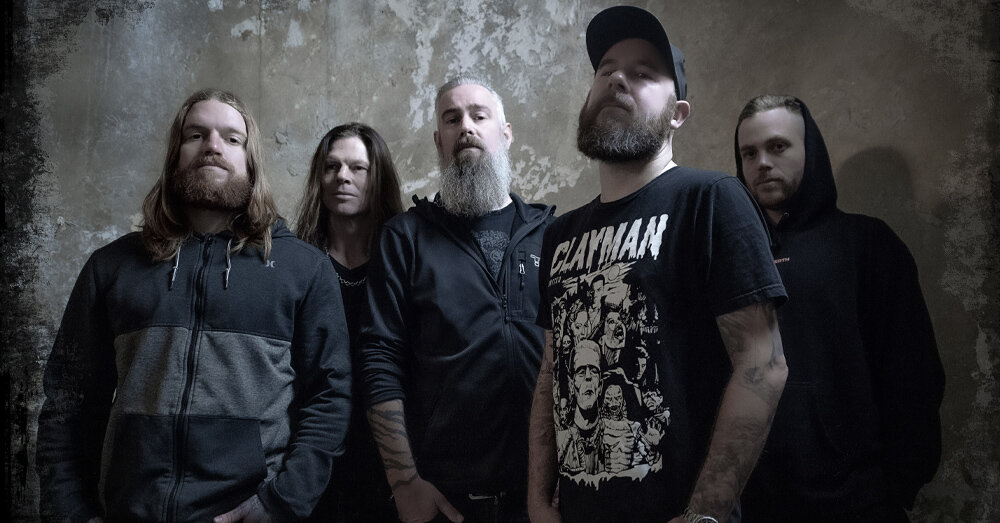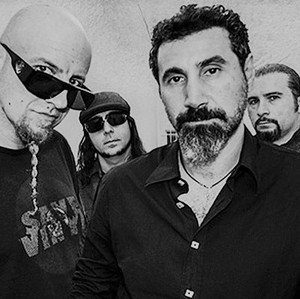Lyrically, Black Metal bands often explore dark and occult themes. They delve into topics like nihilism, anti-Christianity, paganism, and even existentialism. These lyrics aren’t just words; they are often deeply philosophical and poetic, crafted to provoke thought and evoke powerful emotions in listeners.
Another hallmark of Black Metal is its visual aesthetic. Bands within this genre often adopt a sinister and mysterious image. Think corpse paint, leather, spikes, and chains. These visual elements are not merely for show but are integral to expressing the band’s identity and ideology. It’s about creating an otherworldly presence that complements the music’s intensity.
Furthermore, Black Metal is known for its unconventional song structures and melodies. It isn’t about catchy hooks or radio-friendly tunes. Instead, Black Metal embraces dissonance and complexity, creating an atmosphere that is both haunting and hypnotic. The music can shift from blistering blast beats and tremolo-picked guitar riffs to eerie ambient passages, taking listeners on a journey through darkness and despair.
Beyond the music itself, Black Metal bands often operate independently from mainstream music industry standards. They prioritize artistic integrity and autonomy, releasing albums through underground labels or even self-publishing. This DIY approach fosters a tight-knit community of fans and artists who share a passion for pushing boundaries and challenging conventions.
In essence, the key characteristics of Black Metal bands encompass more than just the music. They embody a rebellion against conformity, a fascination with the darker aspects of existence, and a commitment to artistic expression that is uncompromising and deeply personal. It’s a genre that continues to evolve and inspire, drawing in listeners who seek music that is as thought-provoking as it is intense.
Unveiling the Dark Aesthetics: Essential Traits of Black Metal Bands
When it comes to music that dives deep into the shadows, Black Metal stands at the forefront with its distinctive traits and raw intensity. Originating in the 1980s, primarily in Scandinavia, Black Metal isn’t just a genre; it’s a visceral experience that immerses listeners in its dark, atmospheric soundscapes and provocative themes.
Lyrically, Black Metal explores themes of nihilism, nature, and the occult. Bands delve into topics such as anti-Christian sentiment, pagan mythology, and existential dread. The lyrics are often delivered in harsh, shrieking vocals that add to the overall intensity and authenticity of the music. This vocal style, known as “blackened screams,” is a hallmark of the genre and contributes to its eerie and otherworldly vibe.
Visual aesthetics play a crucial role in Black Metal’s identity. Bands often adopt a dark and theatrical appearance, donning corpse paint and elaborate costumes reminiscent of ancient rituals or occult ceremonies. These visual elements not only enhance the live performances but also contribute to the mystique and allure of the genre.
Beyond its musical and visual aspects, Black Metal has a distinct cultural impact. It has inspired a dedicated fanbase and a subculture characterized by its devotion to the underground music scene and DIY ethos. The genre’s uncompromising approach to artistic expression has influenced not only music but also literature, visual arts, and even fashion.
Black Metal is more than just a genre of music; it’s a visceral and transformative experience that challenges norms and pushes boundaries. With its intense sonic landscapes, provocative themes, and distinctive visual aesthetics, Black Metal continues to captivate and intrigue audiences worldwide, making it a truly unique and enduring phenomenon in the realm of music.
Beyond the Music: Exploring the Iconic Features of Black Metal Bands
One of the most striking features of black metal bands is their distinctive visual style. Often adorned in black leather, spikes, and corpsepaint that transforms them into eerie, otherworldly figures, these musicians create a visual spectacle that is both intimidating and captivating. Their appearance isn’t just for show; it’s a reflection of the darkness and intensity of their music.
Beyond their appearance, black metal bands often delve into thematic elements that are deeply rooted in mythology, folklore, and sometimes, the occult. Lyrics explore themes of nihilism, anti-Christian sentiment, nature worship, and existential despair. These themes aren’t just for shock value; they are a philosophical exploration of the darker aspects of the human experience.
Furthermore, black metal bands are known for their raw and aggressive sound. Characterized by fast tempos, shrieking vocals, and heavily distorted guitars, their music creates an atmosphere of chaos and rebellion. It’s not just about the notes they play; it’s about the emotions they evoke and the boundaries they push.
Black metal bands are more than just musicians; they are creators of a dark and immersive world that extends far beyond their music. From their striking visual style to their thematic exploration of darkness and their fierce commitment to independence, these bands continue to captivate and intrigue fans around the globe.
From Guttural Vocals to Corpse Paint: Defining Elements of Black Metal Bands
The guttural vocals of black metal are a defining feature that sets it apart from other genres. Characterized by harsh, raspy tones that seem to emanate from the depths of despair, these vocals add a raw intensity to the music. They are more than just a stylistic choice; they embody the angst and aggression that define the genre.
Beyond their appearance, black metal bands often explore taboo subjects such as Satanism, anti-Christianity, and occultism in their lyrics and imagery. This rebellious spirit has cemented their status as provocateurs within the music industry, challenging societal norms and pushing artistic boundaries.
Metaphorically speaking, black metal can be likened to a tempest raging against the calm sea of mainstream music. It thrives on its ability to shock and provoke, drawing listeners into its bleak and atmospheric soundscapes. Like a painter using shades of darkness to create depth and contrast, black metal bands use their music to paint vivid, albeit bleak, narratives that resonate with their audience.
The defining elements of black metal bands—from guttural vocals that convey raw emotion to the haunting allure of corpse paint—are integral to their identity and appeal. They embody a rebellion against convention and a celebration of darkness, appealing to those who seek music that challenges and evokes strong emotions.
The Anatomy of Black Metal: Key Features That Define the Genre
At its core, black metal is characterized by its raw and abrasive sound. Unlike the polished production of mainstream metal genres, black metal embraces a lo-fi quality that enhances its primal and unsettling atmosphere. The guitars are often tremolo-picked at high speeds, creating a wall of sound that is both chaotic and hypnotic.
One of the defining features of black metal is its lyrical themes. Unlike traditional heavy metal that often explores fantasy or political themes, black metal delves into darker territories such as occultism, nihilism, and existential dread. Themes of nature, ancient mythology, and anti-Christian sentiment are also common, reflecting a deep-seated rebellion against societal norms and religious institutions.
Another key aspect of black metal is its visual aesthetic. Bands often employ corpse paint—a style of makeup that resembles a macabre mask—to create a haunting and otherworldly appearance. This visual element not only enhances the theatricality of black metal performances but also reinforces its themes of darkness and mysticism.
In addition to its sonic and visual elements, black metal is known for its underground and subversive nature. Many bands eschew commercial success and instead operate within tight-knit underground circles, releasing albums independently or through small, niche labels. This DIY ethos fosters a sense of authenticity and independence within the black metal community.
The anatomy of black metal is defined by its raw musical style, dark lyrical themes, distinctive visual aesthetic, underground ethos, and unconventional vocal techniques. Together, these elements contribute to a genre that continues to push boundaries and challenge listeners, making it a captivating and enduring force in the world of heavy metal music.
Diving Into Darkness: Unique Characteristics of Black Metal Bands
Another intriguing aspect of Black Metal is its lyrical themes. While many genres touch on themes of darkness and rebellion, Black Metal takes it to another level. Its lyrics often delve into occultism, existential despair, and anti-Christian sentiments, reflecting a deep-seated rebellion against societal norms and religious dogma. It’s not just music; it’s a form of artistic expression that challenges conventions and sparks introspection.
Visually, Black Metal bands are unmistakable. Adorned in black leather, spikes, and corpsepaint (elaborate face paint resembling deathly pallor), band members create an ominous and theatrical presence on stage. It’s like witnessing a macabre ritual unfold before your eyes—a spectacle that both fascinates and unsettles, leaving a lasting impression on those who dare to look beyond the surface.
In terms of musical technique, Black Metal bands often incorporate fast-paced tremolo picking, blast beats, and dissonant chords to create a wall of sound that engulfs the listener. The goal isn’t just to entertain but to transport the audience to a realm where emotions run deep and darkness reigns supreme.
Symbolism and Rituals: Understanding the Traits of Black Metal Bands
Symbolism plays a pivotal role in the identity of black metal bands. From album covers adorned with intricate, occult-inspired artwork to band logos designed with cryptic symbols, every visual element serves a purpose. These symbols often delve into themes of darkness, anti-religion, and the occult, reflecting the rebellious and nihilistic ethos that defines black metal.
Rituals further deepen the mystique surrounding black metal. Bands frequently incorporate elements of ritualistic performance into their live shows, invoking an atmosphere that blurs the line between music and otherworldly experience. These rituals can include elaborate stage props, such as candles, bones, and even animal skulls, enhancing the visceral impact of their music.
Beyond the stage, black metal bands embrace a lifestyle that embodies their music’s dark aesthetic. Many musicians adopt pseudonyms that reflect their occult personas, distancing themselves from their everyday identities to fully immerse in the atmospheric world they create. This commitment to symbolism and ritual isn’t merely for show; it’s a way for artists to channel their emotions and beliefs into a visceral auditory and visual experience.
Understanding the traits of black metal bands goes beyond the music itself; it’s about grasping the intricate web of symbolism and ritual that shapes their artistry. By delving into these elements, listeners can uncover deeper layers of meaning and appreciate the genre’s unique ability to provoke thought and stir emotions in its devoted followers.
Embracing Obscurity: Signature Characteristics of Black Metal Bands
When diving into the realm of extreme music, few genres captivate and mystify as much as black metal. Known for its raw intensity and unapologetic embrace of darkness, black metal bands distinguish themselves through several signature characteristics that set them apart in the metal landscape.
One of the most striking features of black metal is its sonic aesthetic. Unlike the polished production of mainstream genres, black metal often embraces a lo-fi, raw sound. Guitars screech and drums blast in a cacophony that is intentionally abrasive, aiming to evoke a sense of primal energy rather than technical perfection. This deliberate rawness is not just a stylistic choice but a statement of rebellion against the norms of music production.
Lyrically, black metal delves into themes that are often controversial and provocative. Bands frequently explore topics such as darkness, nihilism, anti-religion, and even occultism. These themes are not merely for shock value but are deeply intertwined with the genre’s ethos of individualism and rejection of societal norms. The lyrics, often delivered in harsh, shrieking vocals, contribute to the overall atmosphere of bleakness and defiance.
Visual presentation is another crucial aspect of black metal bands. Unlike many other genres where image takes a backseat to music, black metal musicians often cultivate an aura of mystique and anonymity. Corpse paint, elaborate costumes, and occult symbols are common elements used to create an otherworldly and sometimes unsettling visual identity. This theatrical aspect adds to the genre’s allure and helps to immerse listeners in its dark, atmospheric world.
Beyond the music and visuals, black metal is also characterized by its underground ethos. Many bands operate independently from mainstream music industry conventions, preferring to release albums through small, niche labels or even self-publishing. This DIY attitude not only preserves the genre’s authenticity but also fosters a strong sense of community among fans and musicians alike.
Frequently Asked Questions
Who are some influential Black Metal bands and artists?
Discover influential Black Metal bands and artists known for shaping the genre with their unique sound and style. Explore names like Mayhem, Burzum, Darkthrone, Emperor, and Gorgoroth, whose music has left a lasting impact on the Black Metal scene.
What are the key themes and lyrical content in Black Metal?
Explore the key themes and lyrical content of Black Metal, focusing on darkness, occultism, anti-Christian sentiment, and existential angst. Discover how these themes are expressed through intense and often controversial imagery and lyrics.
What distinguishes Black Metal from other metal genres?
A concise explanation of the distinctions between Black Metal and other metal genres, focusing on its unique characteristics such as raw production, shrieked vocals, atmospheric and often dark lyrical themes, and emphasis on speed and tremolo-picked guitar riffs.
How did Black Metal originate and evolve?
Discover the origins and evolution of Black Metal, tracing its beginnings in the early 1980s to its diverse subgenres and global influence today. Explore how its dark themes, distinctive musical style, and underground culture have shaped the genre over the decades.
What defines Black Metal music?
Discover what defines Black Metal music with our concise FAQ. Learn about its distinctive sound characterized by fast tempos, shrieking vocals, and dark, atmospheric themes. Explore its origins, influences, and key bands that shaped the genre’s evolution.








